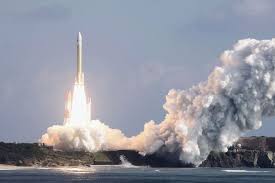Japan has successfully launched its HTV-X1 spacecraft, also known as Kounotori-X1, on a resupply mission to the International Space Station (ISS). The mission, conducted from the Tanegashima Space Center aboard an H3 rocket developed by Mitsubishi Heavy Industries and JAXA, marks a significant upgrade in the country’s space transport and logistics capabilities.
Next-Generation Cargo Capabilities
The HTV-X1 represents Japan’s first spacecraft in a new generation of cargo vehicles designed to deliver critical supplies, scientific instruments, and technology experiments to the ISS. The vehicle carries several tons of cargo, including food, water, spare parts, and experimental payloads to support ongoing microgravity research.
Enhanced Features Compared to HTV
Compared with its predecessor, the HTV (H-II Transfer Vehicle), the HTV-X1 introduces improved reusability, greater cargo volume, and enhanced automation for docking procedures. The spacecraft is expected to autonomously dock with the ISS within the coming days, streamlining operations for station crew and ground control.
Scientific and International Collaboration
In addition to routine resupply items, HTV-X1 carries experimental hardware for international research collaborations. Payloads include next-generation life-support systems, materials science experiments, and other technologies that support both ISS operations and broader space exploration goals.
Strategic Significance
“This mission represents a significant upgrade in Japan’s space transport capabilities,” said JAXA President Hiroshi Yamakawa. The HTV-X1 mission reinforces Japan’s role as a critical partner in sustaining the ISS program and paves the way for participation in NASA’s Artemis lunar missions and the future Gateway lunar outpost.
Mission Timeline
After completing its resupply objectives, the HTV-X1 will remain attached to the ISS for several weeks before returning with waste materials for a controlled reentry over the Pacific Ocean. The mission highlights Japan’s growing expertise in autonomous spacecraft operations and long-term commitment to international space exploration.
Looking Ahead
The successful HTV-X1 launch demonstrates Japan’s expanding capabilities in next-generation cargo spacecraft, advancing not only the ISS program but also future lunar and deep-space missions. With modular design and efficient payload management, HTV-X1 sets a new standard for reliable and sustainable space logistics.

